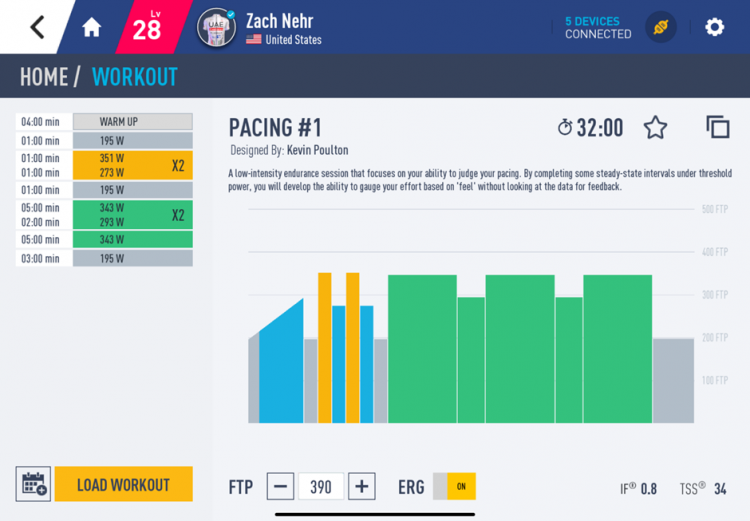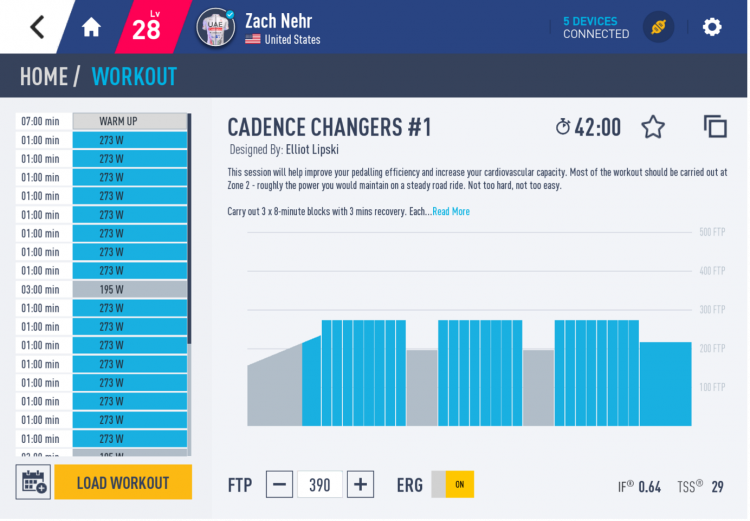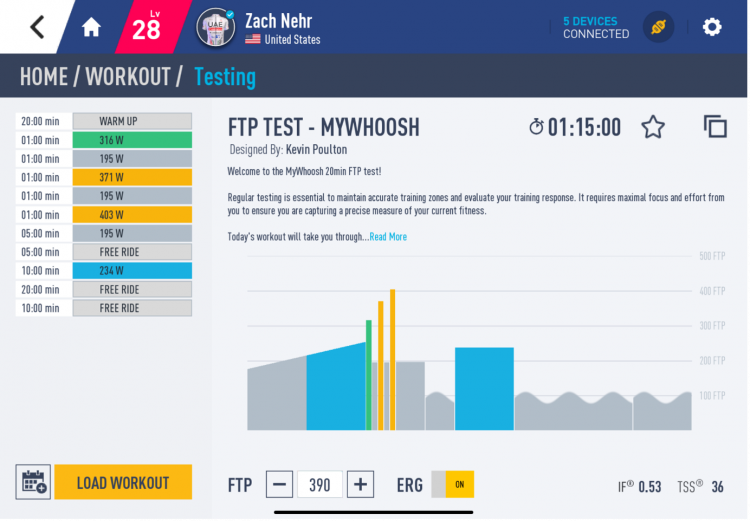10 Ways to Improve Your Cycling Technique and Power Output
By Zach Nehr
Cyclists are always searching for ways to go faster. Whether it’s the latest interval workout, nutrition advice, or aerodynamic socks, we’re always looking for a little boost.
MyWhoosh is the place where you go to get stronger. Structured workouts, training plans, and the hardest virtual bike races in the world will help bring your fitness to the next level. But there is so much more you can do to improve your cycling performance.
Here are 10 tips and techniques to help you improve your performance on MyWhoosh:
- Learn how to pace yourself
One of the biggest differences between beginner and experienced cyclists is their ability to pace an effort. Pacing is the rate at which you complete the course – in other words, pacing is a measurement of your effort and how it changes over the course of the race.
Positive pacing, or doing a positive split, is when your effort is highest at the beginning of the race and lowest at the end. It is not fast, and it is very painful.
Experienced riders know how to pace themselves using a steady effort or negative split, which is when you slowly increase your speed over the course of the race. Proper pacing takes practice, but you’ll know when you’ve gotten it right – with proper pacing, you’ll feel strongest at the end of the race when it matters most.
MyWhoosh has a number of workouts specifically designed to help improve your pacing.

[Image – MyWhoosh pacing workout]
- Focus on your cadence
One of the tell-tale signs of fatigue is when a rider drops their cadence. A typical cycling cadence is 80-90 rpm, or 65-75 rpm while riding out of the saddle. During a strong race effort, your cadence should remain relatively consistent. But as you start feeling tired, your body’s natural reaction is to drop your cadence. Practice keeping a consistent cadence for as long as possible, and you’ll notice that you can maintain a higher power output for a longer period of time.
Here is a cadence workout that you can try on MyWhoosh.

[Image – MyWhoosh cadence workout]
- Stay cool
In recent years, there has been more and more evidence suggesting that core temperature has a massive effect on cycling performance, especially indoor cycling. As soon as you overheat, your performance will drop like a stone.
Stay cool on the indoor trainer with fans, sweatbands, and cold drinks. You can even try lowering the temperature in the room or using a dehumidifier.
- Fuel and hydrate
Your body needs carbohydrates to perform on the bike; there’s no question about that. But there are a few rules to follow in order to get the most out of your fueling and performance.
First, aim to consume roughly 60-80 grams of carbohydrates per hour during hard workouts and races. Experiment with different amounts to see what works best for you and your stomach – nutrition is very individual.
Second, try to consume 30-40 grams of carbohydrates per hour during easy rides lasting longer than 45 minutes. Your body won’t burn through as much fuel due to the lower intensity, but you still need to eat and drink to top up your glycogen stores.
Lastly, you don’t need to force yourself to eat during every single ride. If you’re doing an easy 30-minute spin, your body can easily rely on stored carbohydrates and fat without running on empty.
- Structure Your Training
A structured training plan is one of the #1 things that can take your cycling performance to the next level. Structured training plans, like those in the MyWhoosh app, help increase your fitness while also giving you adequate rest.
Fatigue + rest = fitness gains
Most of the MyWhoosh training plans last 6-8 weeks, and you can test your fitness before and after each plan. MyWhoosh has many different fitness tests that you can use to track your progress over weeks and months.

[Image – MyWhoosh FTP test]
- …But Don’t Forget About Unstructured Training
As great as structured training is, it is not perfect, and it can feel robotic at times. It’s important to remember your love for cycling and why you got into the sport. Most of us love group rides and races, which don’t exactly fit into the category of structured training.
But group rides and races are fun, and they allow us to push ourselves harder than we ever could during a structured workout. The best way to increase your fitness in the long term is to keep an unstructured ride/race in your training plan, maybe once every week or two.
- Stay Consistent
Cycling is a lifelong passion for most of us, and that’s why consistency should be at the top of your priorities. As you train, race, and ride, take note of the aspects of cycling you enjoy the most. Is it structured workouts, group rides, races, or something else?
Whatever it is, remember to keep the fun in cycling and come back to your favorite activities when you’re feeling tired or burned out. Listen to your body, rest when you need to, and your legs will thank you later.
- Set Goals
Goal setting can be one of the most powerful things you do in life, especially in cycling. By setting a goal, you are making yourself accountable and giving yourself a boost in motivation for your toughest days. A goal allows you to create a long-term plan and push yourself to achieve something new.
It’s even better when you set a goal with a friend or family member because now you can keep each other accountable along the way. You can push each other in workouts and help lift each other up during the tougher times.
- Increase Your Training Volume
Sometimes the simplest changes to your training are the most effective, and it’s no secret that higher training volume is correlated with higher cycling fitness. In general, the more you ride, the stronger you get (as long as you rest and recover along the way).
You don’t need to add 10 hours to your program before you notice the difference. Adding another 10-20 minutes onto your daily ride can increase your training volume by 1-2 hours per week. Over time, you might notice an increased endurance capacity, the ability to push yourself deep into a ride, and better resistance to fatigue.
- Recovery
The saying goes, “It is impossible to overtrain – it’s only possible to under-recover.” The best cyclists in the world train up to 40 hours a week, but they also have a team of doctors, chefs, massage therapists, and coaches to help them recover every day.
As you start to increase your training volume or push yourself with harder intervals, you should never neglect your recovery. That means staying on top of your nutrition – eating enough to maintain your energy levels – hydration, and physiological recovery.
For me personally, I feel tightness in my lower back after long training sessions. 15 minutes of daily stretching is enough to undo the tightness and feel great on the bike the following day. You’ll notice different points of tightness and fatigue after training, so take note of what you feel and what you can do to get back to your best.
When you stay on top of your nutrition, hydration, and recovery, you’ll be amazed at what you can achieve on the bike, day after day, and week after week.
—
About the Author
Zach is a freelance writer, professional cyclist, and the owner of ZNehr Coaching. He writes about everything related to bikes and endurance sports, from product reviews and advertorials to feature articles and pro data analytics. You can find Zach racing the Sunday Race Club on MyWhoosh every weekend.

